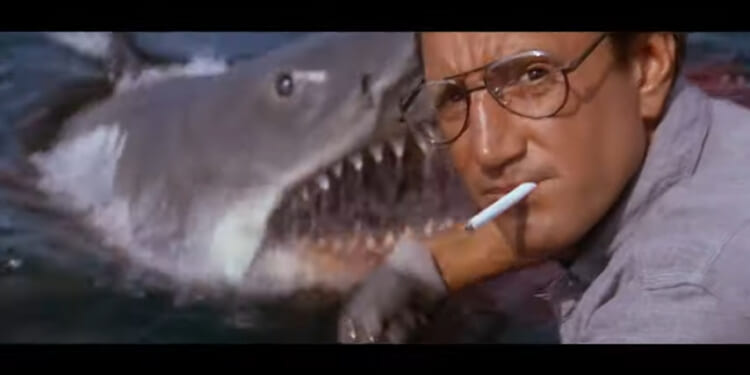It was called the Golden Age of Hollywood, and it gave us such enduring creations as It Happened One Night (1934), Gone with the Wind (1939), Casablanca (1943), All about Eve (1950), From Here to Eternity (1953), and Lawrence of Arabia (1962). It was an era during which world cinema was dominated by the massive output of the Hollywood dream factory. Produced during a period when the primitive technology of the silent era and early talkies had given way, within a surprisingly short time, to a remarkable sophistication in cinematography, sound, and lighting, and shaped under the sometimes chafing auspices of the Hays Code — which barred nudity, obscenity, “sexual perversity,” interracial marriage, and the glorification of criminals, going so far even as to prohibit the depiction of married couples lying chastely in bed together — the era’s celluloid product could be criticized on occasion as conventional in its storytelling and jejune in its sensibility. At their best, however, the films rose to the level of high cinematic art, with writers, actors, and directors collaborating to create works of real aesthetic value that are still considered classics.
In the 1950s and 60s, however, a host of new developments spelled the end of the Golden Age. The studio system declined; the Hays Code collapsed; television became increasingly competitive, compelling many movie executives to turn to the production of epics — The Robe (1953), Spartacus (1960), Cleopatra (1963) — of a sort whose splashy appeal could not be duplicated on the small screen; and films identified with the French New Wave and Italian neorealism — Bicycle Thieves (1948), The 400 Blows (1959), Breathless (1960) — encouraged American directors to make darker and more realistic movies. Hence the New Hollywood, which gave us such departures from the manner and matter of Golden Age Hollywood as Bonnie and Clyde (1967), Midnight Cowboy (1969), and Easy Rider (1969). Not only did many of these films deliver hefty payloads of vulgarity, shock value, and moral ambiguity; they were also, as a rule, less structurally sound than the films of the Golden Age, with scripts and camerawork that often seemed calculated to avoid coherence and linearity.
But of course, the New Hollywood also gave us The Godfather (1972) and Godfather II (1974), two of the all-time masterpieces of American cinema, along with such top-notch works as Chinatown (1974) and The Conversation (1974). Mixed in with this fare, during the early 1970s, were movies like The Exorcist (1973), which exploited the end of the Hays Code to serve up a brand of thriller that went far beyond anything that had come before; solid but essentially old-fashioned crime and disaster yarns like The Sting (1973) and Towering Inferno (1974); sensitive films of the kind that had once been called women’s pictures — Julia (1977), The Turning Point (1977), and An Unmarried Woman (1978) — and, not least, the hit Rocky (1976), which harkened back to the Golden Age with its corny but stirring story of a washed-up boxer who fights his way to the big time.
Inevitably, given the generally narrow appeal of most New Hollywood concoctions, the genre’s days were numbered. American movies desperately needed a new direction, a new formula, a new way to bring families back into the movie houses on a massive scale and on a regular basis. Fifty years ago today, on June 20, 1975, producers Richard D. Zanuck and David Brown, in partnership with Universal Studios, opened just such a colossus on no fewer than 464 screens in the U.S. and Canada — an enormous number at the time, especially for a movie that was expected to be a big success. The movie in this case was, of course, Jaws, based on the bestselling novel by Peter Benchley and directed by Steven Spielberg from a screenplay that passed through a half dozen or so hands before being ultimately credited to Benchley and Carl Gottlieb. I’m old enough to remember the summer it opened. Like millions of others, I stood in a long line with my parents to see it in a theater at the beach.
The lines were long everywhere. It was an entirely unprecedented phenomenon. The studios had never thought of the summer as a season during which one unleashed a prospective blockbuster: it was expected that people would be too busy with outdoor activities to want to sit in the dark staring at a screen. Jaws changed all that. It changed a lot. It made a whole generation — or more — of moviegoers who were also beachgoers look at the ocean in a different way. Nobody who saw Jaws would ever again set that first toe into the surf without at least a smidgen of fear.
Jaws changed Hollywood, too. If neurotic beachgoers smelled blood in the water, movie executives smelled money. Lots of it. Jaws broke all box-office records. Helmed by a tyro director (who was 28 years old upon its release) and starring a trio of actors, none of whom were remotely top-tier stars, Jaws easily beat the all-time record domestic and international grosses that had been set just three years earlier by The Godfather. Hollywood was quick to learn the lesson of Jaws. In the years to come, movies that were roller-coaster adventure stories, crammed with thrills and chills and aimed at grown-ups and kids alike, would regularly break records that statelier earlier films (notably Gone with the Wind and The Sound of Music) had once held for a relatively long time. So it was that two years after Jaws, the #1 domestic box-office record would be snatched up by Star Wars, and, five years after that, by Spielberg’s own E.T.: The Extraterrestrial.
Mind you, E.T. wasn’t a summer but a Christmas release. And in the half-century since, the reliance of the Hollywood studios’ economy on so-called “big-tent” summer- or Christmas-holiday releases designed to rake in fortunes has persisted and intensified to such a point that it is only a slight exaggeration to call it the industry’s only remaining business model. The difference between 50 years ago and now is that while pictures like Jaws and E.T. were not just action-packed crowd-pleasers but also exceedingly well-told stories about fleshed-out characters, the movies that came to define the Hollywood blockbuster — summer or otherwise — have banked not on admirable character or plot development but on sensational special effects. Increasingly, these movies have been cartoons, or live-action movies that mimic cartoons — installments in franchises, many of which are based on Marvel and DC comic books. At this writing, the only 20th-century movie in the current list of 40 highest-grossing films of all time is Titanic (1999), which stands in fourth place; the other titles on the list include movies in the Avatar, Avengers, Star Wars, Jurassic Park, Frozen, Furious, Harry Potter, Iron Man, Toy Story, Despicable Me, and Lord of the Rings series — pictures to which few adults without children in need of entertainment would eagerly subject themselves. The list of movies that did the best at the American box office last week is depressingly similar: a John Wick movie, a Karate Kid movie, a Final Destination movie, plus an assortment of cartoons.
Yes, high-caliber films for mature audiences continue to be made in America. Spielberg himself has directed some of them, notably Schindler’s List (1993) and Saving Private Ryan (1998). But especially since the turn of the century, it’s been slim pickings. As I noted in the spring print issue of The American Spectator, the last few Oscars for Best Picture have gone to movies about slavery, about Jim Crow, and about being black and gay, as well as to heaping doses of America-bashing, capitalism-bashing, and Catholicism-bashing, plus a mishmash of dreary material by writers and directors with distinctly non-American sensibilities. These days, for many filmmakers, a “serious” movie is by definition a politically correct movie — one that has a DEI cast and that preaches a DEI message. But forget about seriousness: these days it’s hard to find a picture that, like Jaws, is, quite simply, an immediate and enduring delight for the entire family. So happy birthday, Jaws. Thanks for the kicks you’ve given us over the years. Too bad about the assembly line of sheer mediocrity that you set in motion.
READ MORE from Bruce Bawer:


![Former Bravo Star Charged After Violent Assault Using a Rock-Filled Sock in Tennessee Walmart [WATCH]](https://www.right2024.com/wp-content/uploads/2025/07/Former-Bravo-Star-Charged-After-Violent-Assault-Using-a-Rock-Filled-350x250.jpg)



![Karoline Leavitt Levels CNN's Kaitlan Collins and Other Legacy Media Reporters [WATCH]](https://www.right2024.com/wp-content/uploads/2025/07/Karoline-Leavitt-Levels-CNNs-Kaitlan-Collins-and-Other-Legacy-Media-350x250.jpg)
![Man Arrested After Screaming at Senators During Big Beautiful Bill Debate [WATCH]](https://www.right2024.com/wp-content/uploads/2025/06/Man-Arrested-After-Screaming-at-Senators-During-Big-Beautiful-Bill-350x250.jpg)








